All products featured are independently chosen by us. However, SoundGuys may receive a commission on orders placed through its retail links. See our ethics statement.
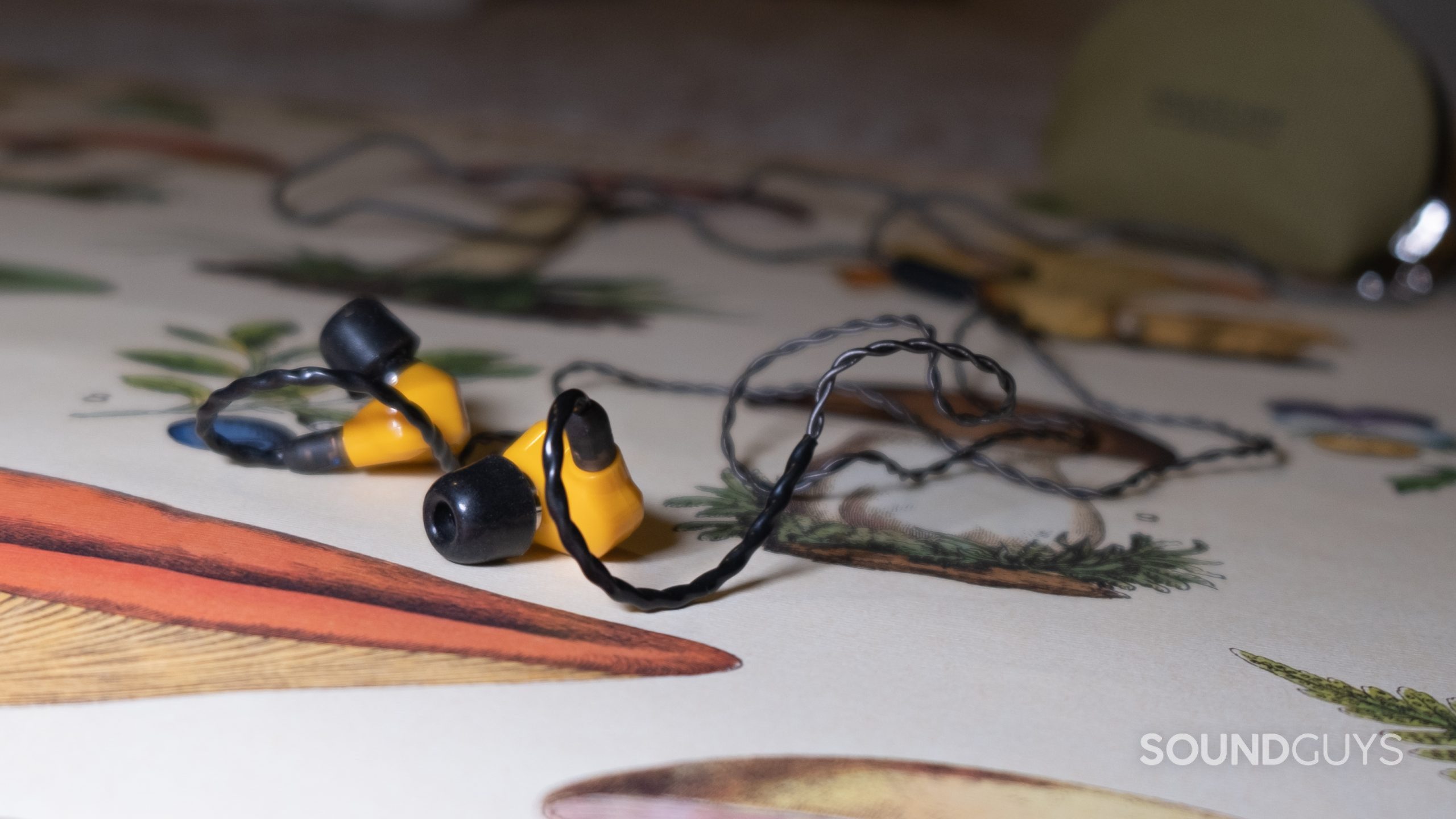
Campfire Audio Honeydew review
January 14, 2022
Campfire Audio Honeydew
Let’s cut to the chase. Folks who like wired earbuds and audiophiles alike have been swarmed with marketing slang for ages. Much of the promotional material around in-ear monitors (IEMs) use hyperbolic language. Does one set really have the thickest bass, or the richest sound? On paper, it’s difficult to know what all that marketing lingo means. I’ve yet to solve that riddle. However, we take objective measurements of every headset that comes our way and the Campfire Audio Honeydew is no exception.
Let’s cut through the brambles of jargon and see if Campfire Audio’s $250 USD set of audio-only earphones lives up to its bassy expectations.
Who should get the Campfire Audio Honeydew?
- Bassheads, modern hip-hop, and EDM fans get to enjoy the low-end boost of the Honeydew frequency response that doesn’t compromise overall audio quality.
- Environmentalists will appreciate how easy it is to replace the cable and ear tips, rather than buying a new set altogether.
- People with hard-to-fit ears are bound to find a good fit with the array of included ear tips.
What’s it like to use the Campfire Audio Honeydew?
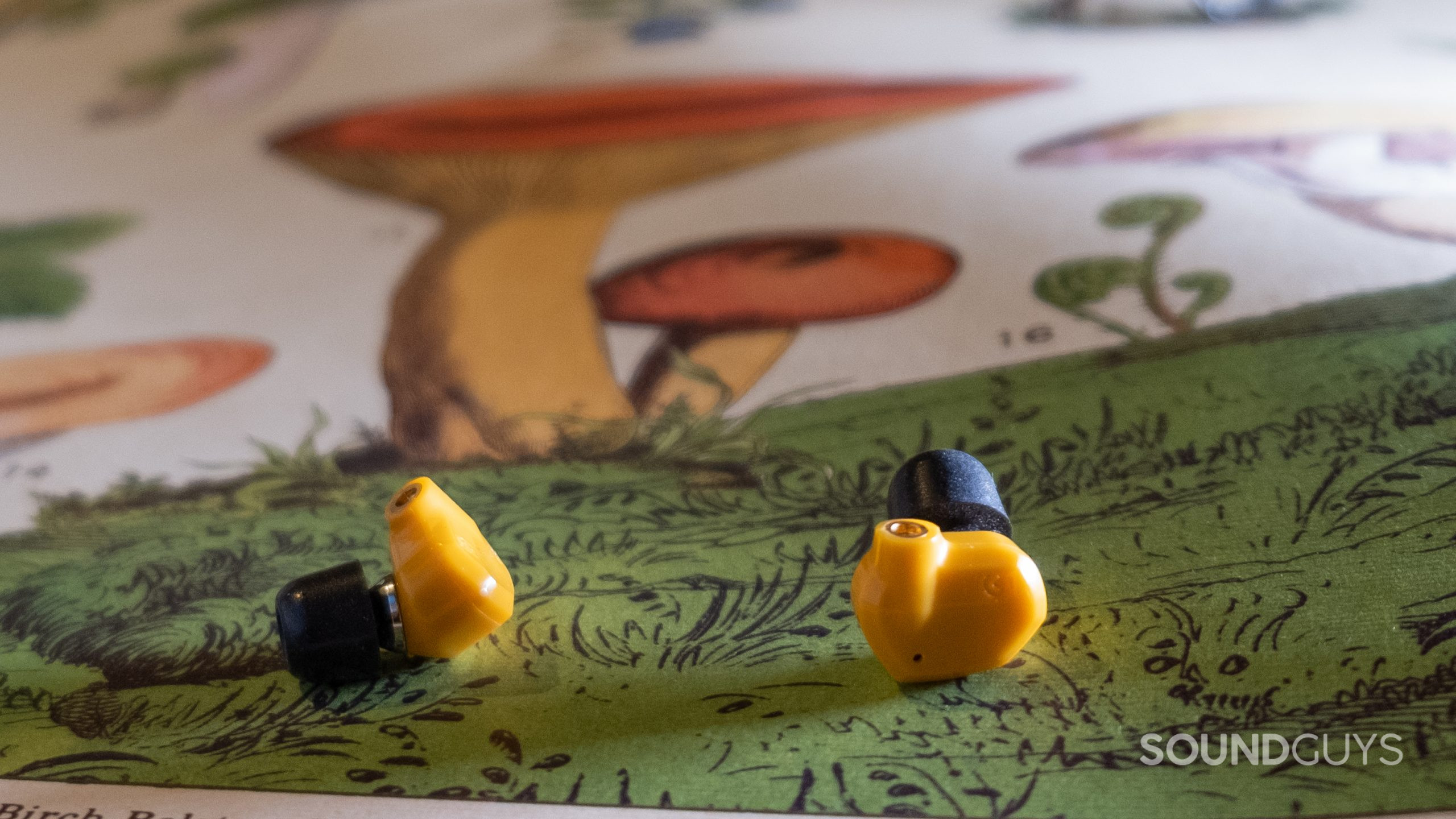
In a cheerful paper box with gold embossing, you’ll find the sunny Campfire Audio Honeydew. Angular, glossy ABS plastic housings connect to a removable MMCX cable that hooks over your ear, making the Honeydew a plug-and-go affair. The idea is that other gear handles playback and the EQ, which makes the Honey as simple or as complicated a headset as you want it to be. It lacks any in-line controls, and you won’t find any kind of software support here.
Start here: What makes a good set of in-ears?
Loaded to the brim with ear tip options, the Campfire Audio Honeydew is a solid candidate for the earbuds that will fit the most people. There are so many ear tips in the box. You get 11 sets with sizes ranging from the smallest at 9mm in outer diameter to around 14mm. Campfire Audio includes its own silicone and foam ear tips, alongside Final Audio silicone ear tips. Notably, some of the silicone ear tips are the same diameter, but different heights to accommodate deeper or shallower ears. I use the medium foam tips (12mm diameter) for flights, but switch to the less occlusive 11mm silicone ear tips at home. Having the choice feels good, and once in, I can listen to the Honeydew for hours without discomfort.
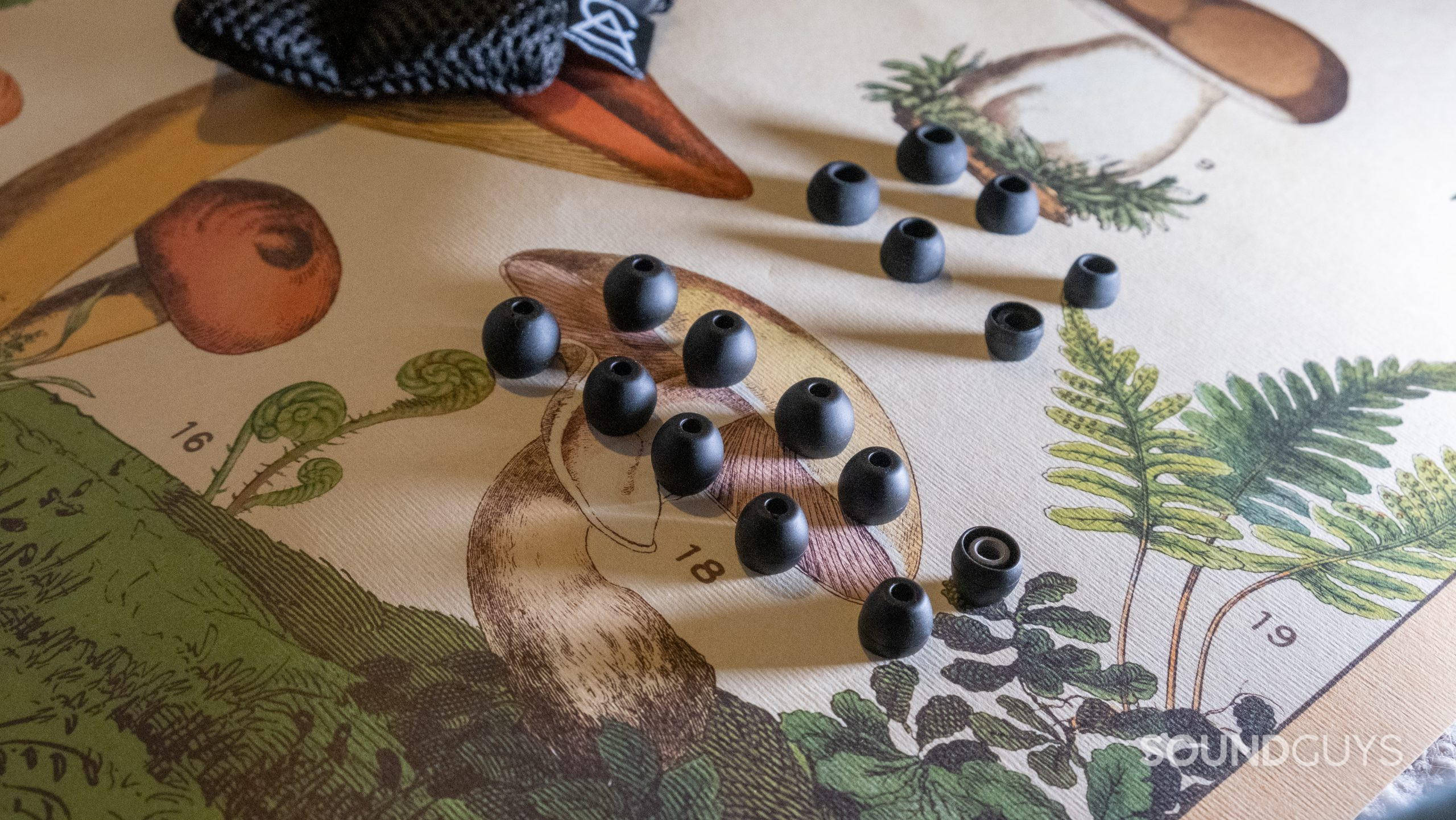
At $250 USD, the Honeydew is not cheap and the included suite of accessories is definitely premium. You get two carry cases. One is a thick green canvas zip-up with a fuzzy lined interior. I quite like it, because it’s pocketable, has some give, and you can stand it up on a table. The other is mesh with a cinch, intended to hold your various ear tips and the cleaning tool.
Related: The best headphones for bass
While you can always recycle the paper board box it ships in, it’s easy enough to repurpose it as an ear tip holder instead. It helps to visually keep track of the tips and display them on a desk. The mesh bag is fine, but to find a matching ear tip you have to dump them all out anyway. It’s a fussy detail, but I prefer a board with all the ear tips arranged on it, as I’ve seen with other earphones.
How do you connect the Campfire Audio Honeydew?
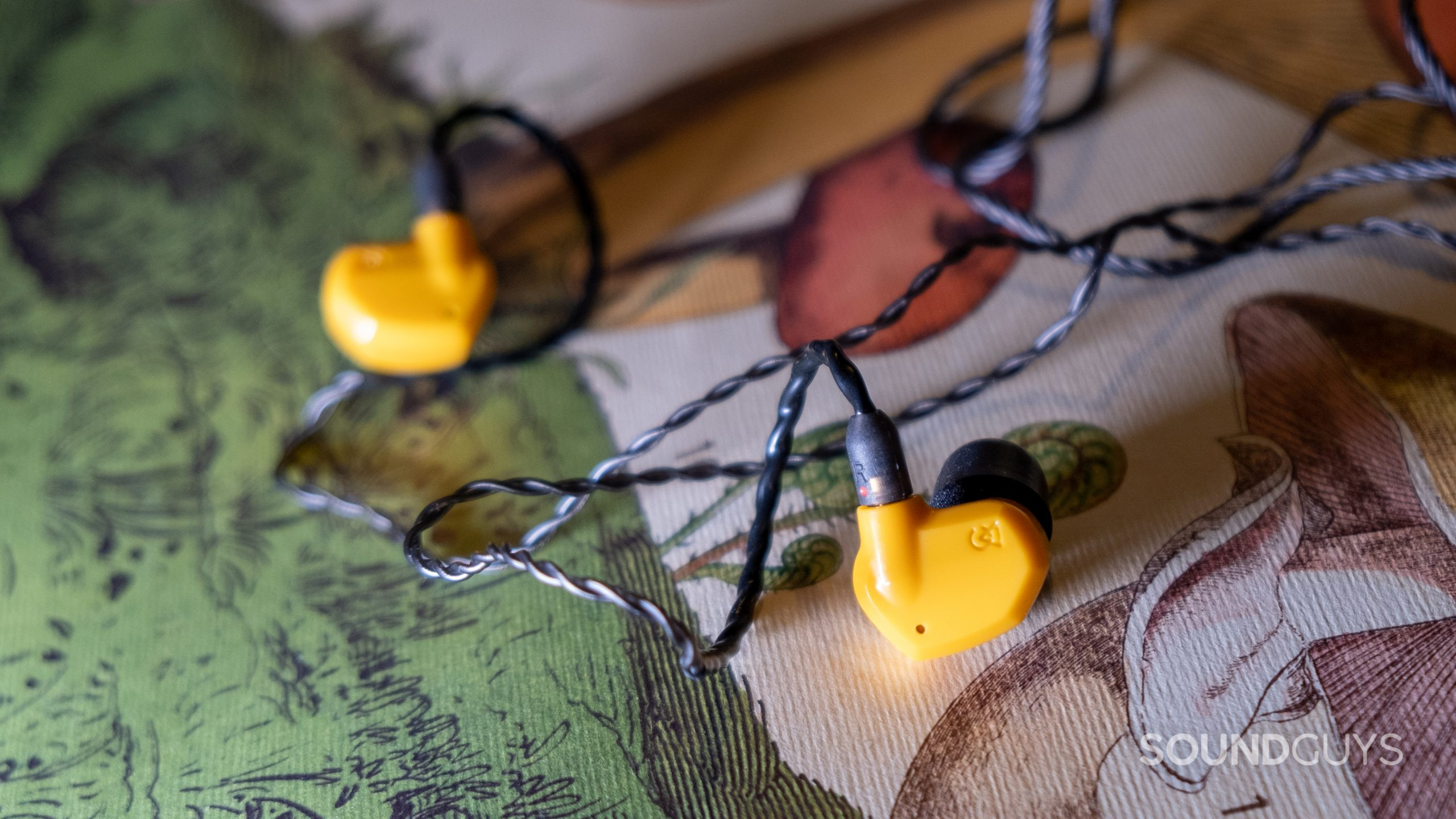
The Honeydew uses a custom beryllium and copper cable with standard MMCX connectors on the buds. This cable feels soft and sturdy, and terminates with a standard 90-degree turn at the 3.5mm plug. This cable drops the annoying rigidity of the average PVC cased headphone cable, and lays more like a necktie than a cable. Those with phones lacking a headphone jack can still use this with a dongle adapter.
Are wired earbuds better than wireless earbuds?
While Bluetooth has mostly won the smartphone war due to the convenience of wireless (and true wireless) for life on the go, not everything has Bluetooth capability. Virtually all other audio equipment has some kind of wired output, be it your fancy headphone amp/DAC, your PC, or synthesizer keyboard. You know, it may feel good being untethered from your phone, but it’s also nice to just plug in instead of standing there wondering why you can’t connect your Bluetooth buds.
Point blank, wired audio outperforms all wireless streaming. It doesn’t matter which Bluetooth codec you choose, though some are certainly better than others. Regardless, wired transmission equals better quality, and if you happen to use a high-resolution streaming service that supports FLAC like Amazon Music, then you should choose wired earbuds.
Does the Campfire Audio Honeydew block out noise?
Loading chart ...
The Honeydew effectively reduces the loudness of sounds above 1kHz, because isolation works best on higher pitched, incidental noises. Nearby conversations and other unpredictable sounds will seem much quieter with the Honeydew (up to one-sixteenth their original loudness). Low-frequency sounds like the rumbles of a train car are quieted too, though not as notably.
Remember, passive isolation requires a good in-ear fit, and the Honeydew’s aforementioned arsenal of ear tips means you can probably find something that fits without going custom. Some materials offer better isolating qualities than others, after all.
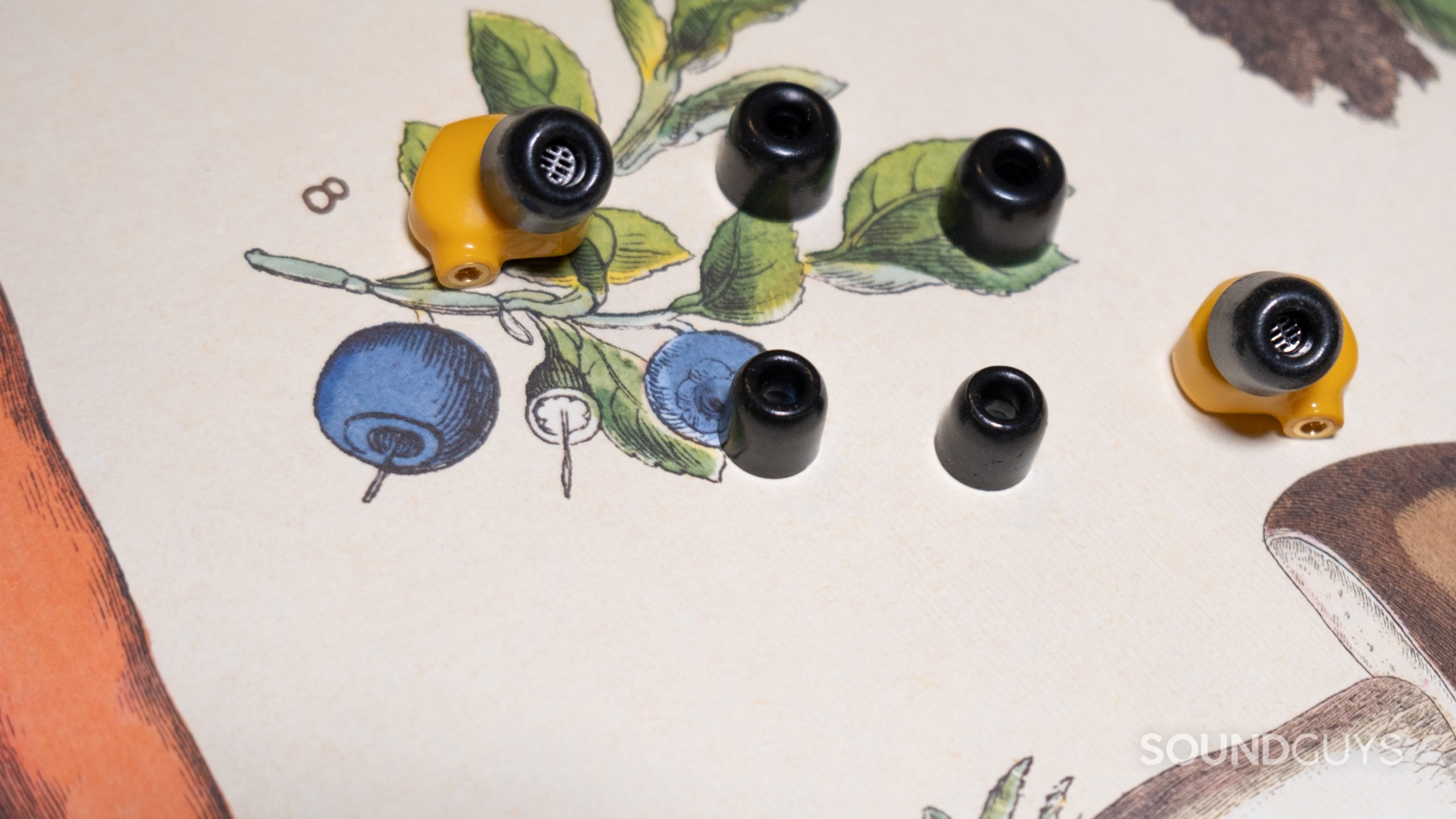
On a flight, the dampening foam ear tips supply me with better noise isolation than the silicone tips. It’s not active noise canceling (ANC) quality, as the low-frequency din of the airplane still comes through with only a slight reduction. However, the isolation blocks out the chatter of passengers (averaging around 35dB in highs) and dims the babies’ cries to a tolerable volume, making listening easy to keep at a safe volume.
How does the Campfire Audio Honeydew sound?
Loading chart ...
Surprise, the Campfire Audio Honeydew is not an audiophile product in the common parlance. It’s a bass beast, and a quality bass beast. Anyone hoping to find an accurate or a studio-style frequency response on the Honeydew will be disappointed. However, anyone listening for pleasure, particularly if they like to hear mids and bass, will enjoy the 5dB-plus volume increase below to notes 200Hz. This coupled with a distinct under-emphasis above 1000Hz gives the Honeydew its bassy sound.
Campfire Audio claims the Honeydew best suits hip-hop, drum and bass, EDM, psych rock, and basically any other bass-heavy genre. It’s also tagged as a product for beat making, which has a kind of logic to it. Given the low emphasis and extended low-frequency response range (down to 5Hz instead of the standard 20Hz), it’s capable of revealing production artifacts. You probably still want to grab those studio headphones to make sure your beats actually sound good on other headsets after you make them on the Honeydew, but sometimes oomph can inspire music making more than accuracy. However, it’s worth noting you probably can’t hear all the way down to 5Hz, though some people have reported feeling sub-bass vibrations.
Lows, mids, and highs
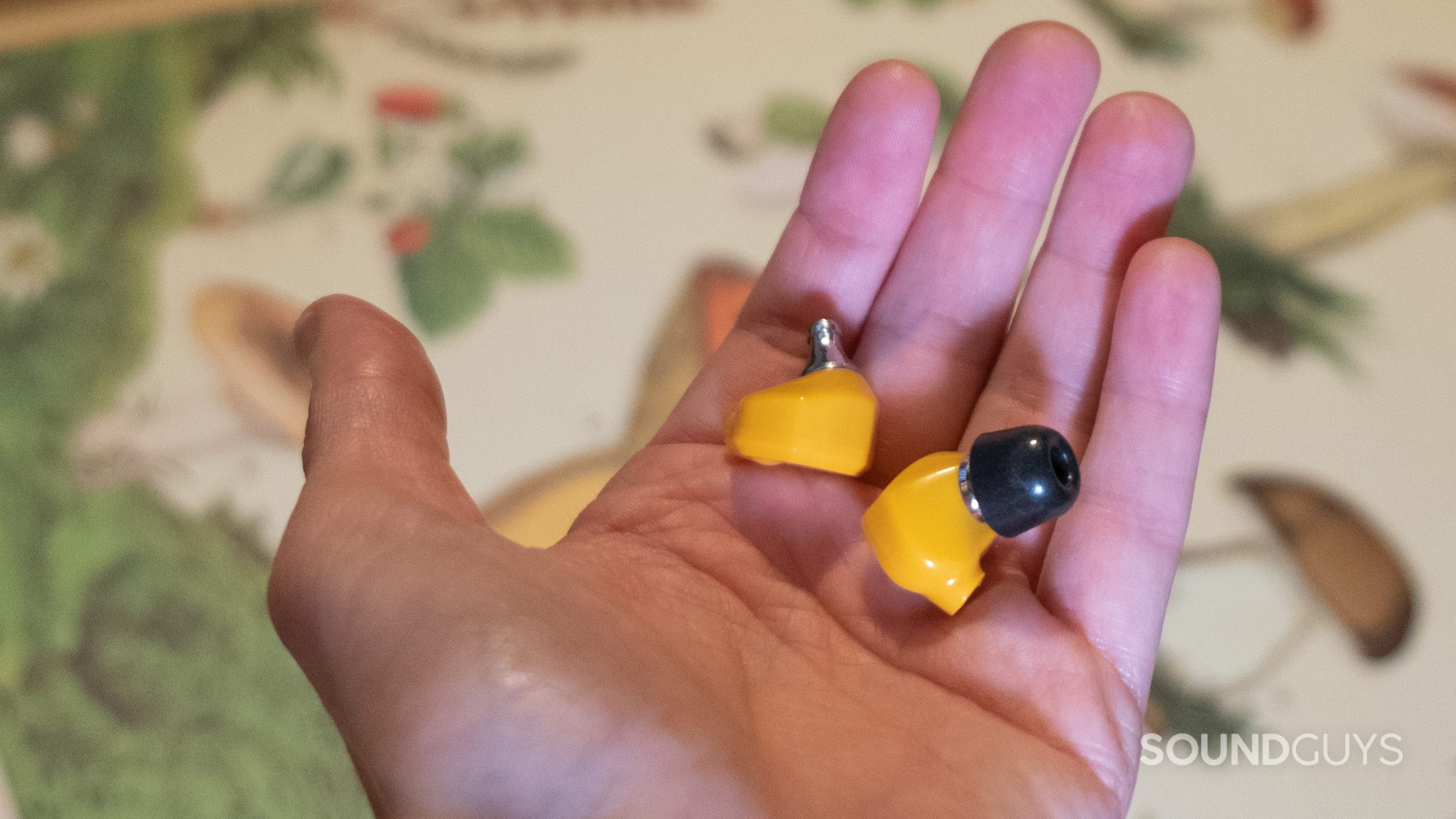
Listening to the heavily bass-laden ’70s rock track, Hellbound Train by Savoy Brown reveals a very loud, yet detailed low end. Bass this loud masks lead vocals, which the Honeydew reproduces too quietly. Cymbals are severely under-emphasized, sounding almost like static blips. Meanwhile, the overdriven guitar lacks even volume output across the frequency spectrum. It’s a shame, as the Honeydew makes mids sound quite good, but the bass masks it in just about any scenario. Nevertheless, the quality of the audio sounds clear enough for most listeners without any obvious signs of distortion.
Frankly, the Honeydew's bass response sounds a bit like too much of a good thing going wrong.
Picking something more modern, Birthday by Disclosure, Kehlani, and Syd sounds more pleasant, perhaps because of more modern mixing techniques that account for bass-heavy consumer headsets. First off, the bass line and low synth percussive tones are audibly distinct from each other. Kehlani and Syd’s voices lack some detail and clarity (elements commonly achieved through high-frequency emphasis), but the relative volume sounds more or less good. In the mids and highs, the keys sound too quiet due to a combination of masking and plainliy under-emphasized treble, though you can hear them fine.
How do you EQ the Campfire Audio Honeydew?
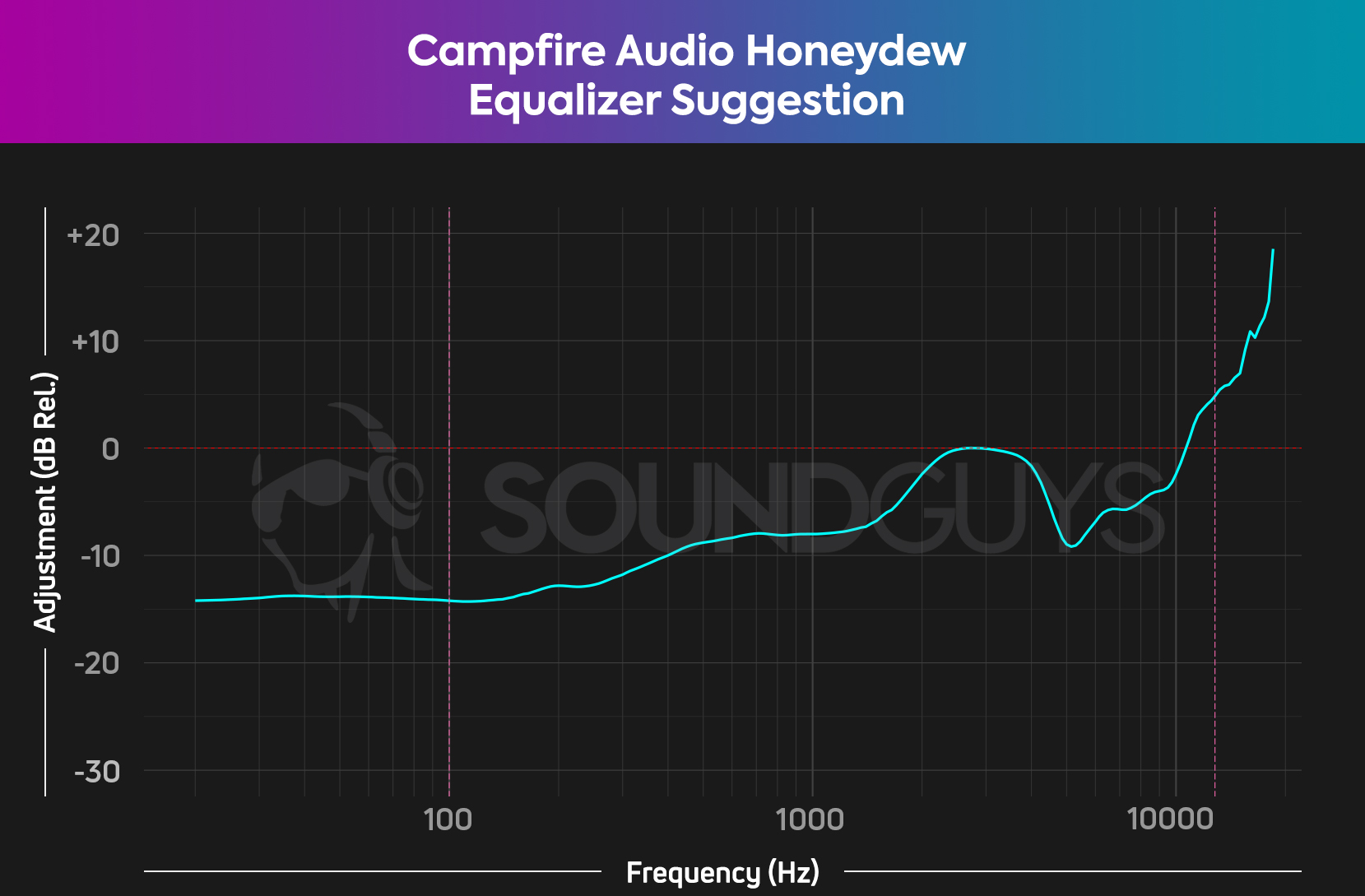
Consider the benefits of equalizing the Campfire Audio Honeydew. While it’s true that the Honeydew excels with low end, sometimes you want to hear other frequencies more evenly. Due to auditory masking caused by (dare I say) too much bass, you can’t hear mids or highs all too well.
Thanks to the low distortion of the 10mm dynamic drivers and premium construction, you can easily turn up some frequencies and turn down others to tune your listening. It’s like having two sets of earbuds in one: the bassy default, and the more consumer-friendly one via EQ.
Should you buy the Campfire Audio Honeydew?
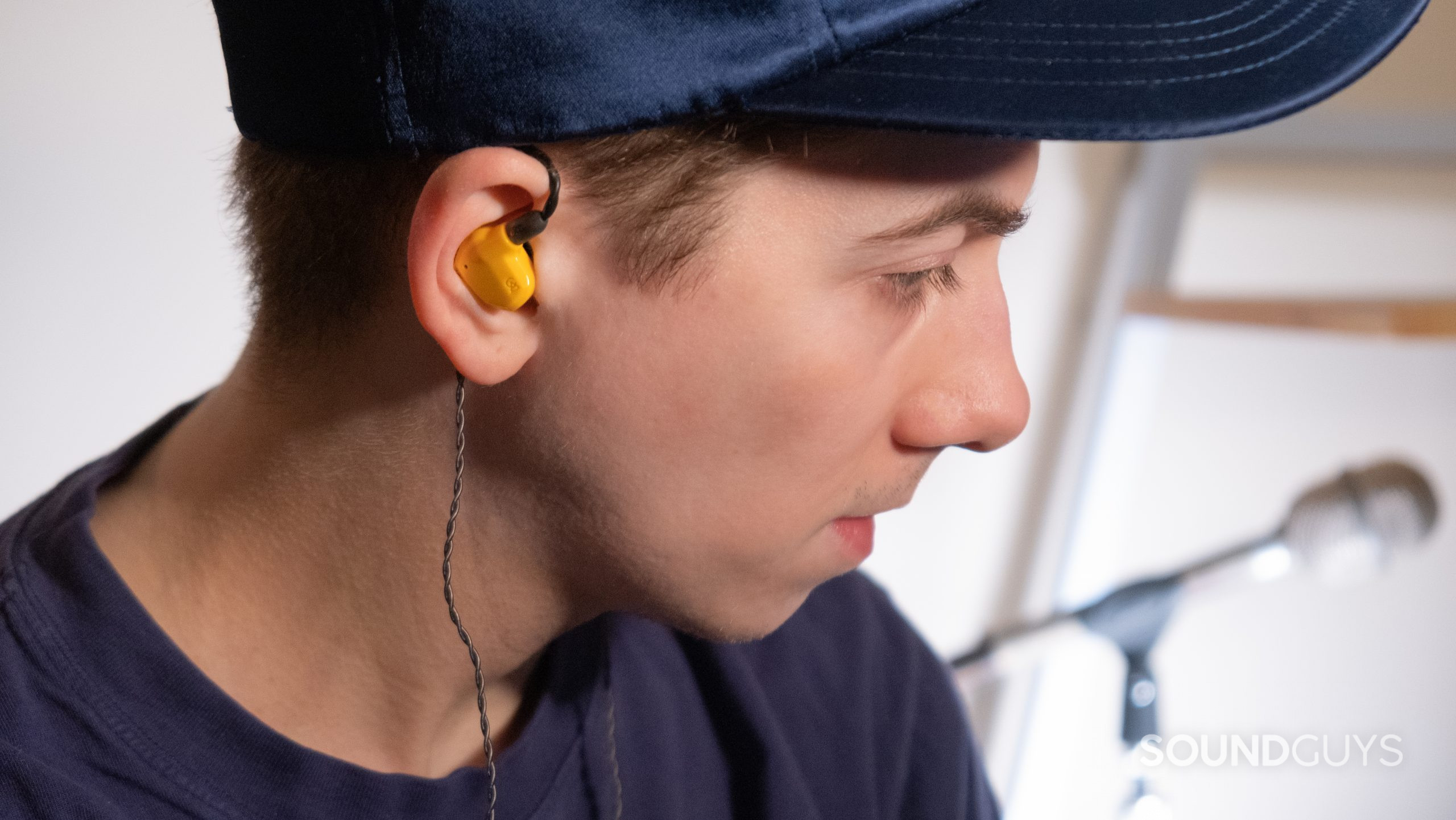
Do you like bass? Do you listen to predominantly bass-centric genres of music? There’s a reason why Beats upended the consumer audio industry; it’s due to the desire for exaggerated bass voicings (and marketing). The Honeydew doesn’t sound like everyone’s cup of tea, and it certainly deviates from what we posit as the ideal consumer sound. All that aside, if you just want bassy earbuds, the Honeydew is the one to pick.
With its selection of ear tip sizes, replaceable cable, and low distortion, the Honeydew delivers a quality experience. The audio quality is always good and the over-ear cabling feels so lightweight it nearly disappears. Filter it through an equalizer and you can bring in some highs.

Of course, the Honeydew doesn’t have the portability of wireless and true wireless options, but its size ranks as pocketable. Plus you can plug in to watch the in-flight movies, while your Bluetooth buds sit unused in the charging case.
What should you get instead of the Campfire Audio Honeydew?
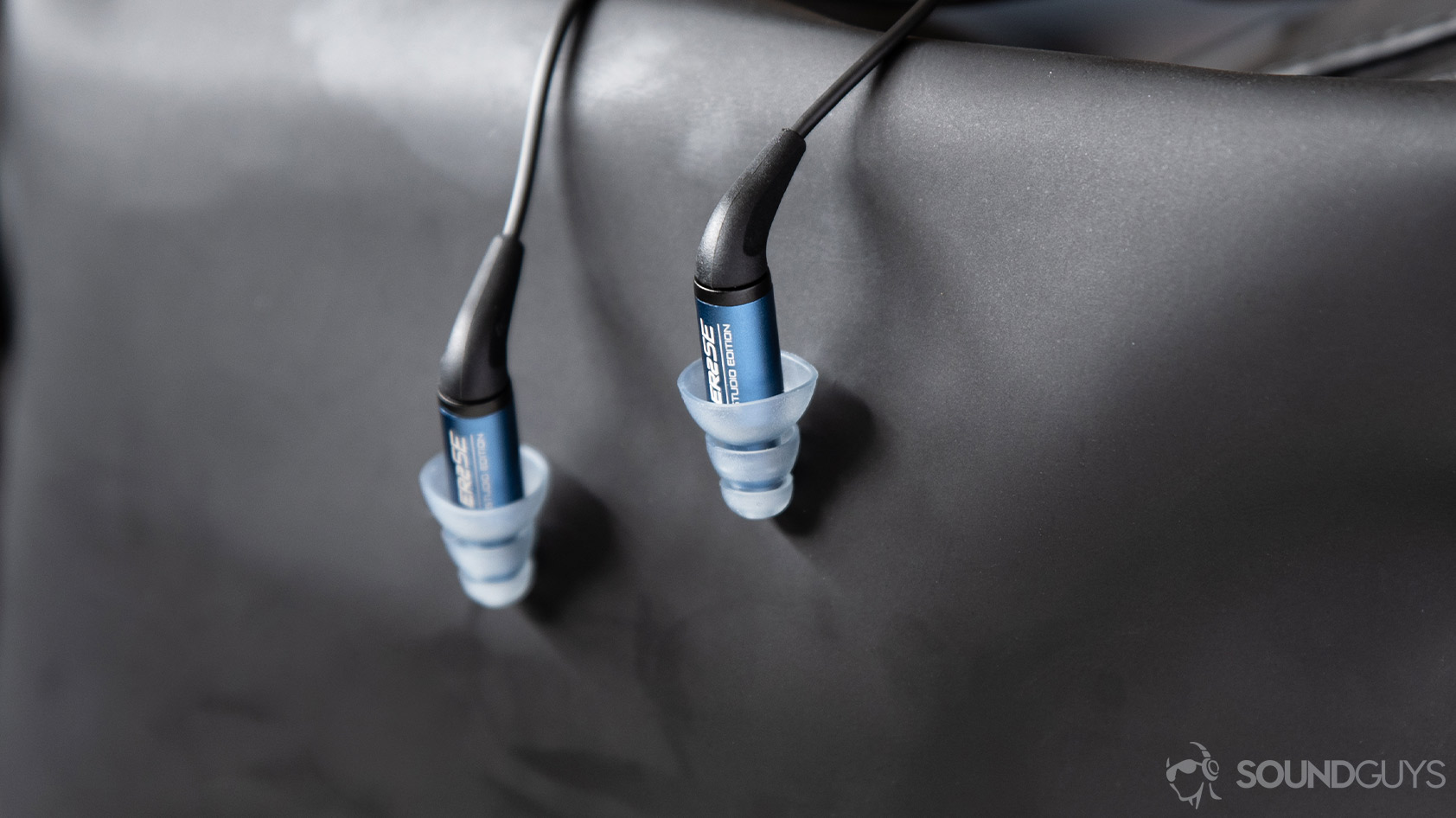
Say you want a set of good sounding in-ear monitors that isn’t as bassy. You should check out the more neutral-leaning Etymotic ER2SE. The sound and fit suit most ears well, and the price lands below the Honeydew. Like the Honeydew, you can replace the cable down the road if it breaks too.
For the budget audiophiles among us, the Shure SE215 (basically the wired version of AONIC 215 Gen 2) has an excellent frequency response. It rivals the ER2SE and Honeydew for comfort and offers good isolation. What it lacks in independent aesthetic pizazz, you save in dollars. Want to go the true wireless route? The Shure AONIC Free may be your next best friend.
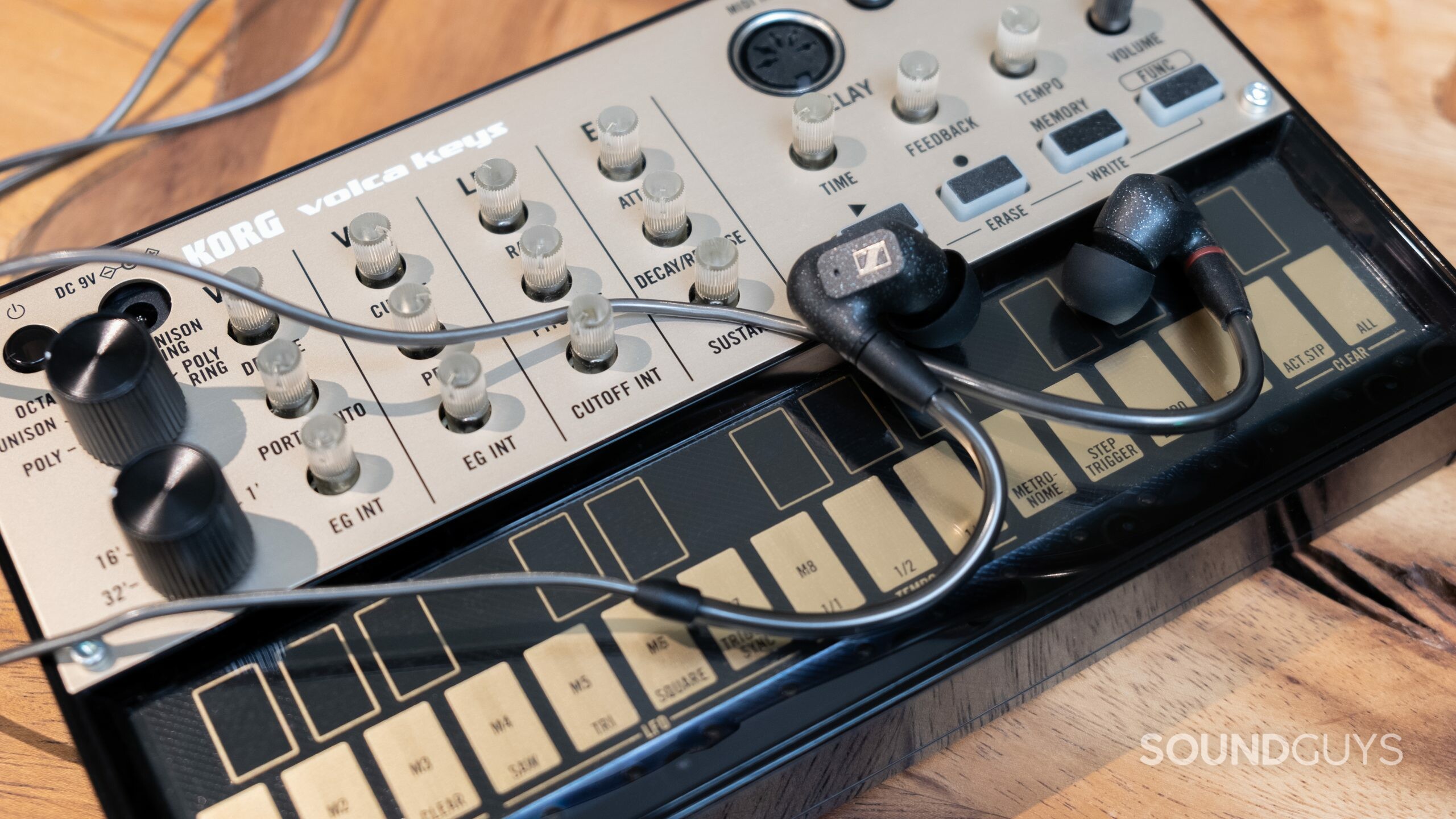
Lastly, the Sennheiser IE 300 sounds excellent, landing somewhere between neutral and consumer-friendly with a good amount of oomph. Fortunately, the bass doesn’t quite overwhelm music as much as the Honeydew. The frequency response still leans into the mids and bass, however, it’s a reasonable balance. You get silicone and foam ear tips to boot, not as many as the Honeydew, but, who else ships 11 sets of ear tips?
Next: The best earbuds
Thank you for being part of our community. Read our Comment Policy before posting.